Welcome 2025! Australia is in the full flush of summer and though I’m not a warm weather person, this is one of my favourite times of year. I love new beginnings (however artificial); the crisp, cedary smell of breaking open a new planner; the laying down of new goals and routines you’ll either stick to and be proud of or look back on and laugh at this same time next year.
I don’t really do perfumed resolutions, but each year I find that my taste evolves and I end up focusing on a perfume note or style that I want to explore in depth. Last year I went hunting for a scent that captures the smoky-ashy, sweet poison perfection that is the smell of cigarette smoke, one of my favourite scents in the world. In 2024 I got my nose across so many wonderful and terrible cigarette scents - some that even ended up in my collection. I find that with so many perfumes flooding the market, hyperfixation can sometimes be a saving grace when searching out things to sniff.
For 2025 I’ll be deep diving into the children of Fracas: room filling gardenia and tuberose scents. For the past few months, I’ve been reaching more and more for super blousy, flirty, 1980’s big white florals. When it comes to white florals I am not interested in anything tame or ladylike; I want perfumes in this genre to take tuberose to the very edge of overwhelming, where it’s nearly sickening; I want the smells that were banned from restaurants. I promise I will only spray them once or twice.
First up on my to-sniff list are Charade by Sarah Baker and Un Bel Amour D'ete by Parfums d'Empire, but I tend to find that when you dive deep enough on any given theme in perfume it’s the unexpected scents that really blow you away.
One thing that remains true about me is that I’m always sniffing something. Sometimes this takes the form of dedicated wear tests and evaluations for articles, but often it’s just for curiosity or fun. I’ve always got about twenty tabs of perfume articles, news coverage, and sponsored nonsense on the go, which means a lot to talk about (hopefully) at the end of each week.
In this newsletter we’ll cover the new Hermes release, plus a handful of other scents I’ve been wear testing. I wore Gris Clair from Serge Lutens for New Year, and hope that you were all wearing something you loved just as much to bring you in to 2025.
M
Barénia
House: Hermes, Perfumer: Christine Nagel (in house), Year: 2024
Nothing gets the perfume world as excited as a new pillar scent from Chanel or Hermes, and in 2024 we had new arrivals from each: Comete and Barenia.
Perfume at Hermes is the well trodden ground of The Perfect Scent, Chandler Burr’s landmark book that follows then in-house perfumer Jean-Claude Ellena’s journey to creating Un Jardin Sur de Nil. But that book was published eighteen years ago, and Ellena’s tenure at Hermes ended in 2016. What is Hermes doing now?
As always with perfume at Hermes, the answer is that they don’t really know. Their in house talent since 2016 has been Christine Nagel, a perfumer of immense competence who is being frustratingly limited by a brand that doesn’t know what it wants. With so much talent behind the scenes, they do occasionally stumble upon brilliance, but a coherent vision of where Hermes lives within the luxury perfume landscape remains elusive.
Enter Barenia.
Named for a leather used by Hermes, Barenia is a new perfume being marketed as the brand’s first chypre. Cue the heavenly choir for perfume fanatics - there’s nothing that makes us lose our minds quite like a chypre. This very old, very brilliant perfume structure traditionally has a fruity opening, resinous heart, and earthy base. The chypre is usually not sweet, or musky, or particularly woody-ambery, which makes it the polar opposite structure to every trend that is currently dominating the market.
Calling your perfume a chypre is the Sicilian Defence of fragrance world marketing - you better know what the hell you’re doing if you open with it. The classic chypre is basically no more due to regulatory restrictions on naturals like oakmoss, but there’s a lot of interesting exploration happening with neo-chypres to recreate this classic perfume style.
Barenia is Nagel’s attempt at showing that you can go home again and that the chypre is alive and well using modern synthetics. It’s hard to spray a chypre and not have the olfactory memory of Mitsouko clear in your mind. The characteristic mossy smell of the chypre feels steamy, almost humid - it always makes me think of a bathroom post shower, when you’ve turned the water off but the air is still thick with moisture and the faint, lingering, soapy scent of your body wash.
Upon first spray, Barenia immediately gives me this thick, humid, fleshy feeling. We’re definitely in the realm of the chypre. The fruity opening is very subdued, almost muzzled - there’s no juicy burst of fresh berries here, but a subtle feeling that a berry may have been here once, many eons ago.
Restraint in all areas is the theme of Barenia. Typically for Hermes, this is a perfume that takes itself seriously, but that’s not the worst thing in a chypre. This is a genre of perfume that is no-nonsense - chypre is the scent that would linger in the air of a Kennedy-Onassis summer garden party, or on the wrists of a woman in a perfectly tailored suit.
The scent moves quickly into its lily-patchouli central accord and stays there. The dominant character in Barenia is akigalawood, a captive Givaudan patchouli synthetic. This material has become nearly ubiquitous in designer scents in the last five years, and it clear to see why - it’s an incredibly natural smelling synthetic, multifaceted and warm, like a glass-clear patchouli without too much funk. It holds up so pleasantly that I wouldn’t be surprised if it joined the ranks of the Molecule line one day. akigalawood may take all the interest out of a natural patchouli note, but it what it leaves is an incredibly versatile material for the modern perfumer.
Barenia is abstract, as most Hermes perfumes are, and after its opening the notes blend so that they aren’t projecting in parallel but rather blur into one another to create a distinctive sillage. The perfume doesn’t project strongly, favouring intimacy over presence, but its longevity is remarkable. I know this because after eight hours of Christmas errands I could still smell its humid patchouli drydown on my arm.
Nagel is an expert hand at blending seamless, almost gossamer perfumes, and Barenia is no different. Akigalawood is not oakmoss and this is not a classic chypre, but unfortunately I don’t think Barenia holds up on its own without understanding this context. It feels as if there’s an opportunity missed in this perfume in attempting to make it into a revival scent when we could have had something avant garde and novel instead.
By the drydown Barenia becomes defined by what isn’t there. Every note feels halfhearted, as if they’ve been diluted in water to become weaker versions of themselves. The berries are gone; the lily is tepid; the patchouli beats listlessly on; the empire breathes its last. The professional, almost clinical facade of office workers is all over Barenia - it’s as if every note has sat through a tedious routine of induction and safety onboarding courses before being allowed into the bottle.
Too abstract and off trend to have mass market appeal, yet not strange or innovative enough to please fanatics, my feelings on smelling Barenia can be distilled down to, ‘Who is this for?” (I actually muttered this out loud during Christmas shopping - my mother turned to ask what I meant, but wisely refrained when she saw it was just her daughter with her nose buried in her wrist once again).
Perfumery arms of designer houses occupy a strange liminal space in the luxury world. They are specifically designed to be the most accessible products to consumers - you may not ever be able to buy an Hermes bag, but odds on you could afford $150 AUD for 50ml of Barenia at some point. These perfumes must have mass appeal, but not degrade the luxury reputation and style of the brand - they must be at home in your local department store but make the wearer feel as if they’re in the Rue du Faubourg. In summary, mass market designer perfumes must bottle the middle class aspiration of luxury.
Of the Hermes lineup only Twilly, Nagel’s pretty gingered floral, and Ellena’s Terre D’Hermes, a boring grapefruit and cedar masquerading as a vetiver, have successfully met this brief. The brand also gives itself the space to be experimental and downright weird at times, like in the daring H24. In this scent Nagel modernised another classic perfume structure, the fougere, around a confronting note of sclarene that smells of freshly steamed clothes and hot iron. It’s metallic and bizarre, and to date the only Hermes bottle I own.
Barenia sits in between these two extremes. Competently made and inoffensive, it’s not boring enough to be crowd pleasing but not interesting enough to appeal to fragrance obsessives. This perfume shows us that technical expertise and quality materials are not enough to make great perfume, and that Hermes continues to struggle with a coherent brand identity.
The artistic director for the wider Hermes portfolio recently noted that the brand’s skyrocketing popularity made it akin to ‘an old lady with startup issues’. If you ever wanted to know what that might smell like, head down to your local department store and give Barenia a whiff. ★★☆☆☆
Quick Sniffs
TOY 2 BUBBLEGUM
House: Moschino, Perfumer: Olivier Pescheux (Givaudan), Year: 2021
The ultra kitsch, ultra cute Moschino Toy series is a true love it or hate line of perfume. For my money, I think that marketing a men’s perfume in a bottle that looks like a giant gummy bear is genius, subversive, and quite fun - and perfume as an industry is always in need of more fun.
Too bad I hated the cult hit Toy Boy (Moschino, 2019) - its sweet vetiver drydrown is similar to La Belle (Jean-Paul Gaultier, 2019) and both make me feel physically queasy. Thus I wasn’t expecting much from Toy 2 Bubblegum, the feminine marketed flanker scent that is what is says on the bear-shaped tin.
When I think bubblegum in perfume, I think tuberose, specifically the blousy and sexy dripping floral heart of Fracas (Robert Piguet, 1948), which to me smells of a kind of luxurious bubblegum I think only exists in the imagination. Toy 2 Bubblegum is not a tuberose, but it’s not a simple ethyl maltol “bubblegum” either. It smells upon first spray of an artificial orange blossom and rosewater tutti fruitti Hubba Bubba scent that reminds me of childhood visits to the big department store and its pick’n’mix candy stand. The bubblegum is only a top note and it fades after half an hour, leaving a pleasant and unremarkable musky rose, but for a gimmick perfume this one is well made.
One would expect as much from its perfumer Olivier Pescheux, who was more frequently found creating scents for Diptyque before his passing in 2023. Maybe I’ll buy a bottle of Toy 2 Bubblegum when they reach my local discounters - it’s always good to have an easy reach, and won’t the bottle look dear on my grab tray? ★★☆☆☆
ROUGE SMOKING
House: BDK Parfums Perfumer: Amelie Bourgeois (Flair) Year: 2018
As a big fan of cherry perfumes and a not-so-big fan of BDK, I was fifty fifty on whether I’d like Rouge Smoking when I ordered a sample. My love for cherry, almond, and all notes benzylaldehydic stems from a childhood spent drinking cherry syrup for tonsillitis; my dislike for BDK stems from smelling a lot of their other perfumes and finding them to be dull, overpriced, and uninspired. BDK seems to me to be the exact nucleus of mediocrity for the modern niche brand, along with its siblings Parfums de Marly, Creed, and Roja Dove. A perfume from one of these brands would really have to blow me away to be worth the price.
Fortunately for my wallet, Rouge Smoking and its new, pointless Extrait flanker prove to be disappointing indeed. Cherry scents have been in vogue since Tom Ford’s Lost Cherry, but in devastating news for all the medicinal loving freaks like me these scents are more lip gloss than cough syrup. There’s a kind of cowardice to perfumery that strips out all the challenging facets of a scent and leaves behind only a bland, powdery mess, which is exactly what Rouge Smoking does to its cherry.
Like most post Tom Ford cherry perfumes, Rouge Smoking is a woody-amber with a faint and halfhearted cherry top note. The scent is a study in powder, using a vat of cashmeran and a heliotrope note that is on its very last legs to enhance the tonka bean drydown so that the whole scent feels like it sticks to the back of your tongue, like a Cherry Cola that’s gone flat and tepid but that you still drink anyway.
I’m a pretty easy sell on cherry perfumes. What others may find too sweet, too chalky, or too bitter I love dearly - frankly, I love dirt cheap chemist scents that are probably just a rough synthetic cherry accord on top of some laundry musks. If you’re a bad perfume with a good cherry note, I’ll still like you. However, being a bad perfume that also has a bad cherry note is one crime too many. Niche houses like BDK are born out of cynicism and every scent is designed to do one thing only, and that’s push bottles. I’m sure that the Lost Cherry association combined with the pretty bottle, ridiculous price tag, and coat riding from BDK’s big hitter Gris Charnel makes sure that Rouge Smoking gets the job done. I can only hope that the people who have bought it find something to love in the mess. ★☆☆☆☆
Opus XIV – Royal Tobacco
House: Amouage Perfumer: Cecile Zerokian (independent) Year: 2022
There’s a lot to say about the house of Amouage. As the niche market grows thicker and thicker every year, the royal Omani firm remains remarkable as it is that rarest of things: a house where every scent is worth smelling.
Amouage perfumes are full bodied experiences full of character and emotion, like sitting down for a three hour movie with chapters and intermission. They are perfumes whose depths you may never fully scrape the bottom of, and that makes them a brand of rare beauty and joy.
The twelve year tenure of Chistopher Chong (2007 - 2019) as creative director of Amouage may be one of the greatest creative outputs we’ll ever see in the world of perfumery. It was era defining — which is why you feel that particular sharp pinch in your gut whenever you smell one of Amouage’s new perfumes and you think, how did they lose the magic?
It’s not like the scents being released under the new creative director, Renaud Salmon, are bad. Quite the contrary - it’s incredibly difficult for Amouage to make a bad perfume, considering the quality of materials they use and the reputation for luxury that they uphold. But there was a kind of obsessive fever about the Christopher Chong years - the weaving through chaos of a hundred different notes to the ambery heart of Jubilation XXV, the rose and spices overdose of Epic, the incense smoke and jelly beans firepower of Interlude - that you can’t help but miss.
When Amouage released their first flanker perfume in 2020, Interlude Black Iris, it was clear that the era of ruthless refinement for perfection was over and more mundane concerns, like keeping the business profitable, had breached the horizon. As much as I understand it - and I certainly want Amouage to continue making perfumes - I think there’s always going to be a feeling that the brand is now somewhere east of Eden.
Opus XIV Royal Tobacco is an entry in Amouage’s long running Library collection. It’s a collaboration between Amouage and Cecile Zarokian, who has created over ten scents for the house. It is unquestionable that of her generation of classically trained perfumers, Zarokian will be one of the greats - the jewel in her crown so far is Ani (Nishane, 2020), but she’s done incredible work for Jovoy and MDCI as well. Her style - complicated, competent, and punchy, with a particular grace for amber scents - is well suited to Amouage’s aesthetic.
There’s a lot of funky stuff going on in Royal Tobacco, which is good - we like funky. The official notes list reads: Frankincense Oil, Elemi, Cardamom, Anise, Basil, Bergamot, Tobacco Absolute, Liquorice Root, Lavender, Prunol, Fenugreek, Orange Blossom, Osmanthus, Rose, Frankincense Resinoid, Peru Balsam, Benzoin, Labdanum, Myrrh, Birch Tar, Tonka Bean, Vanilla Madagascar, Vetiver, Guaiac Wood, Oud Assam, and Musks.
Amouage perfumes are big and they are strong. They are not perfumes that tend to highlight one note, but rather throw about fifty at you and anticipate that you’ll simply figure out a way to swim through them.
Upon first spray, Royal Tobacco is as delightfully overwhelming as I expected it to be. Immediately I can smell that this is not the warm, sweet, boozy tobacco accord that is common on the market. A blast of dry, nearly bitter herbal notes come racing out of the bottle, like the dried herbs hanging in a rustic cottage, a fire nearby giving them a touch of smoke. The anise note is more prevalent to my nose than the fenugreek, but there’s certainly a touch of celery seed playing in the dried spice vibe here. This opening is playing my song - I love bitter accords, even more when they play against notes like tobacco that have an inherent sweetness. We’re off to a good start.
Amouage perfumes are like a great sun - they appear over the horizon, growing and changing as the day passes, before they eventually fade in to night. As Royal Tobacco progresses towards midday the dried herbs are joined, somewhat jarringly, by a stewed fruit note. This must be the Prunol, a synthetic material meant to evoke plum.
I can see the purpose of the note here - the perfume is showing itself to thematically evoke a cigar scent, giving depth and character to the tobacco - but it’s heavy handed and on my skin takes everything a touch too sweet and syrupy. I want the dry, almost scratchy herbal opening back - the intensely smoky and full tobacco base note gives this scent all the sweetness it needs.
The stewed plum phase lasts for a depressingly long time, before fading away into a lovely, licorice kissed tobacco and resin drydown. Resins are Amouage’s bread and butter and the slightly powdery leather of labdanum dominateshere, giving Royal Tobacco a sticky, vintage car leather touch as it softly begins to fade away.
A day with an Amouage perfume always stays so vivid because it’s a day when scent is never permitted to drift to the back of your mind. Because the perfume is always changing it’s like you’re on alert, waiting for the next page to turn, waiting to see how the story ends.
Royal Tobacco is herbal and smoky, resinous and dry. Like all Amouage perfumes, it is not cheap - $600 AUD for 100ml - and the thing that surprised me most about it was that there were moments as I wore it that I thought, this could be a perfume from any niche house. It doesn’t have that touch of obsession. It doesn’t have the magic.
Opus XIV – Royal Tobacco is a good perfume - but it’s not a great one. And it leaves me wondering, when is someone going to come along and bring the magic back to Amouage again? ★★★☆☆ ■


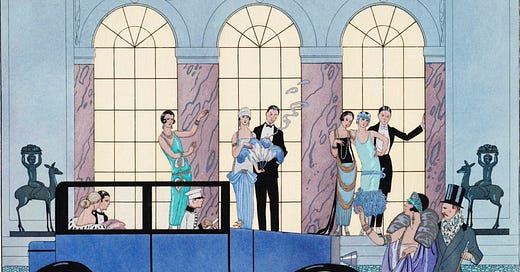




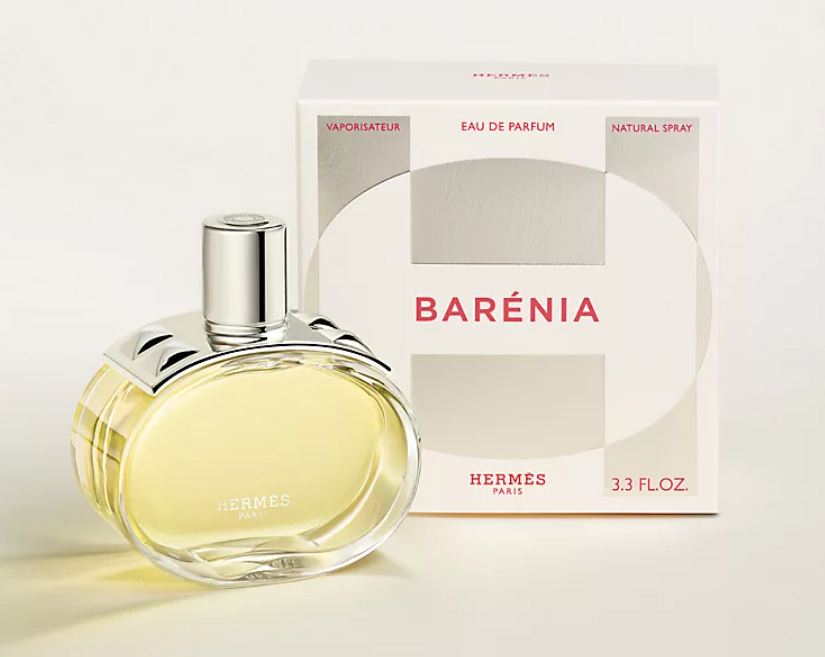
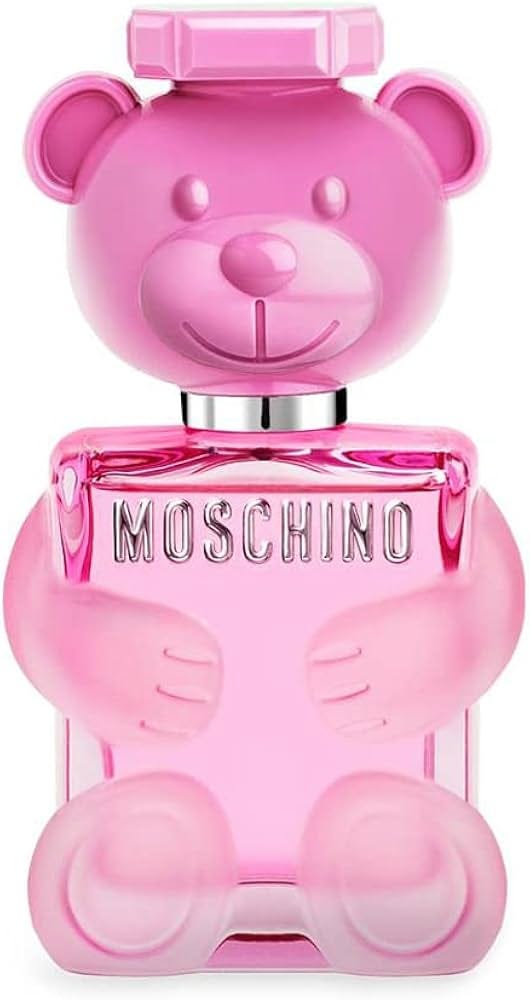
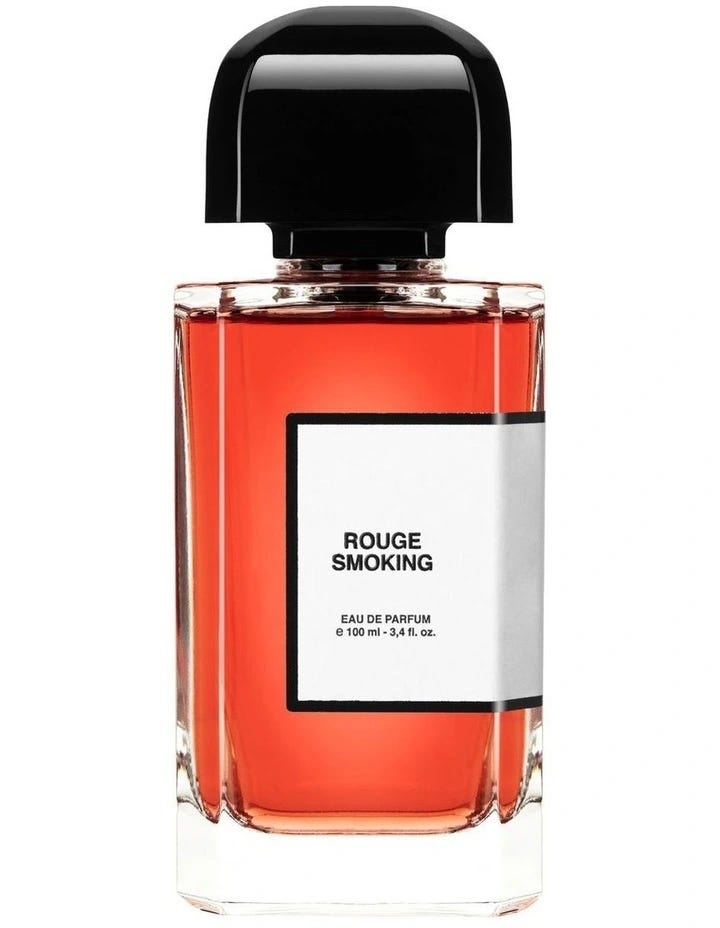
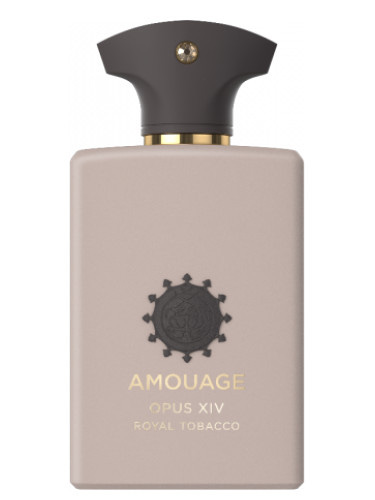
“ … the exact nucleus of mediocrity …. along with its siblings … “ 😂 AGREED! These lines gaslight me. I can’t find anything worth wearing a second time and I think that it’s sheerly the price point that makes me think, “Ok there HAS to be something worth it here …” I like how you have unequivocally indicated that indeed there is nothing to be missed.
Tuberose, you say? In case you haven't discovered this classic before, allow me to throw a hat into the ring: the great, bombastic chypre, 1984's original Bijan. I haven't tried the perfume yet, but I prefer the balance and sweetness of the EdP to the EdT, although it's harder to dose because this beast is STRONG. I own and love both – true harbingers of the era with gorgeous openings and terrific, civet-drenched drydowns. Warning: avoid the synthetic garbage Five Star Fragrances reformulations like the plague. Good luck!